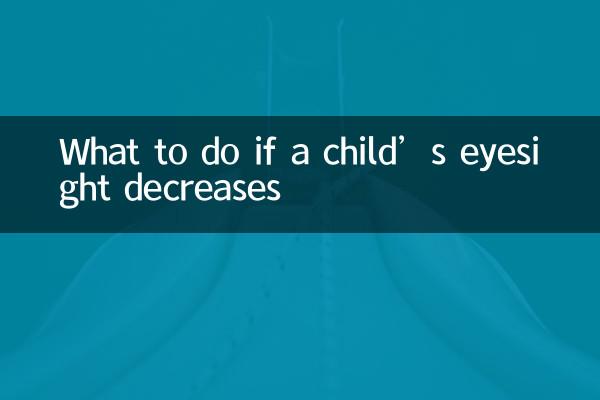What to do if a child’s eyesight decreases
In recent years, children's vision problems have become increasingly prominent, especially the rate of myopia, which has increased year by year, becoming the focus of attention of parents and society. The following is a structured analysis of hot topics and solutions on children's vision health in the past 10 days across the Internet to help parents scientifically deal with the problem of children's vision loss.
1. Main causes of vision loss in children

| Cause classification | Specific performance | Data proportion |
|---|---|---|
| Bad eye habits | Using your eyes at close range for a long time and using incorrect posture | 42% |
| Electronic screen use | Used for more than 2 hours a day | 35% |
| Not enough outdoor activities | Less than 1 hour per day | 18% |
| genetic factors | Myopia in one or both parents | 5% |
2. Scientific response plan
1. Establish healthy eye-use habits
• Follow the “20-20-20” rule: every 20 minutes look at an object 20 feet away for 20 seconds
• Maintain correct posture for reading and writing (eyes should be more than 30cm away from the book)
• Ensure adequate lighting (>300lux)
2. Properly control electronic screen time
| age group | Recommended daily limit | Things to note |
|---|---|---|
| 0-3 years old | Not recommended | Avoid any electronic screens |
| 3-6 years old | ≤30 minutes | Parents are required to accompany you throughout the process |
| primary school student | ≤1 hour | Use in divided doses, each time ≤20 minutes |
| junior high school students | ≤1.5 hours | Turn on eye protection mode at night |
3. Increase outdoor activities
• Guarantee more than 2 hours of outdoor activities every day
• Key periods: before 10 a.m. and after 3 p.m.
• Effective activities: ball games, kite flying and other events that require alternating use of eyes near and far.
3. Nutritional supplement program
| Nutrients | Recommended food | daily requirement |
|---|---|---|
| Vitamin A | Carrots, animal liver | 300-700μg |
| Lutein | Spinach, corn | 6-10mg |
| DHA | Deep sea fish, nuts | 100-200mg |
| zinc | Oysters, lean meat | 8-12mg |
4. Key points for regular vision examinations
•Check frequency: Twice per year for preschoolers, once per semester for school-age students
•Key indicators: Naked visual acuity, corrected visual acuity, axial length
•early warning sign: Squinting, rubbing eyes, tilting head to look at objects, sudden drop in performance
5. Analysis of common misunderstandings
1."Wearing glasses will worsen myopia": Scientifically fitted glasses can effectively relieve visual fatigue
2."Eye protection lamp can prevent myopia": It only improves lighting conditions and cannot replace eye hygiene.
3.“Eye exercises don’t work”: Correct operation can relieve ciliary muscle tension (need to cooperate with other measures)
6. Emergency treatment suggestions
Your child needs immediate medical attention when:
• Sudden vision loss
• Eye pain, headache with nausea and vomiting
• Visual distortion or visual field loss
Through the above structured program, parents can systematically help their children protect their eyesight. Remember, vision protection requires the joint participation of families, schools and medical institutions, and establishing a long-term prevention and control mechanism is the fundamental way.

check the details

check the details